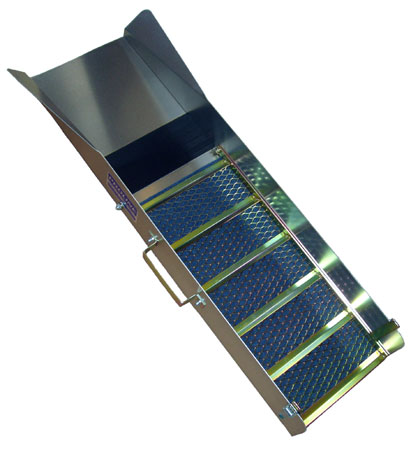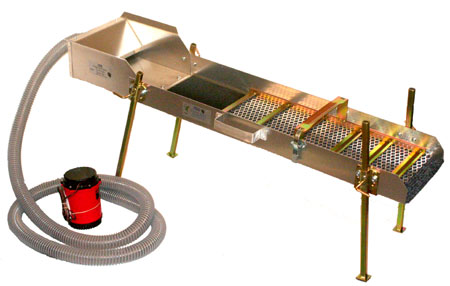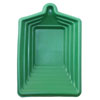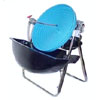Sluice Box Prospecting. The High Gold Prices Today May Make You Consider Trying

Sluice box prospecting is an enjoyable way to spend some leisure time productively. They are very lightweight and can be used practically anywhere you find a creek.
Because they are not power driven they do not disturb the environment they are lightly regulated. Because they have no power motor, there is no reason to carry gasoline, they do not smoke and there is no annoying noise to bother others who may be trying to enjoy the outdoors along a creek.
If you are contemplating taking up the hobby you should first have a knowledge as to how gold deposits in the creek or river.
 |
Environmentally Friendly 12 Volt Battery Operated Power Sluice. For Details Click om Photo
Gold is very heavy. In fact it is the heaviest of all metals. A single gold bar weighs about 42 pounds. How did it get into the stream? Good question.
Walk along any stream and you see it may be tranquil as it flows steadily along on the way to the ocean. During spring thaws and times of heavy rains it may change from that quiet little brook into a raging torrent. Stand nearby while it is full flood and you will see boulders and rocks rolling along the channel.
Every once in so many years the creek will have what is called a once-in-every-500-year flood. This is what hydrologists study before they allow development to take place in hilly or mountain areas. During these floods, huge boulders and rocks may be carried along.
Not only rocks get carried along but gold as well. Being heavier that anything else it will quickly fall to the bottom at the first opportunity settling behind riffles in the creek. Everywhere water flows there are riffles. Rocks, sand and gravel bars, bridge footings, tree stumps, curves in the creek. Even when water flows through culvert pipes and canals there are irregularities that cause riffles to form. If you look at a sluice box you will note a series of cross pieces called riffles. Along the bottom of the sluice there will be a specially designed mesh containing many hundreds of riffles. Since the gold is heavier that anything else passing through the sluice, it will drop in behind the riffles letting the water and sand and gravel pass overhead.
 |
Simply click the photos for prices and details.
 |
By using a sluice box you will not only enjoy the fun of doing the work but at the spot price of gold these days it can prove to be a very profitable hobby. This is what placer mining is all about on the smallest of scale.
Return from Sluice Box to Home
Return from Sluice Box to gold Panning



